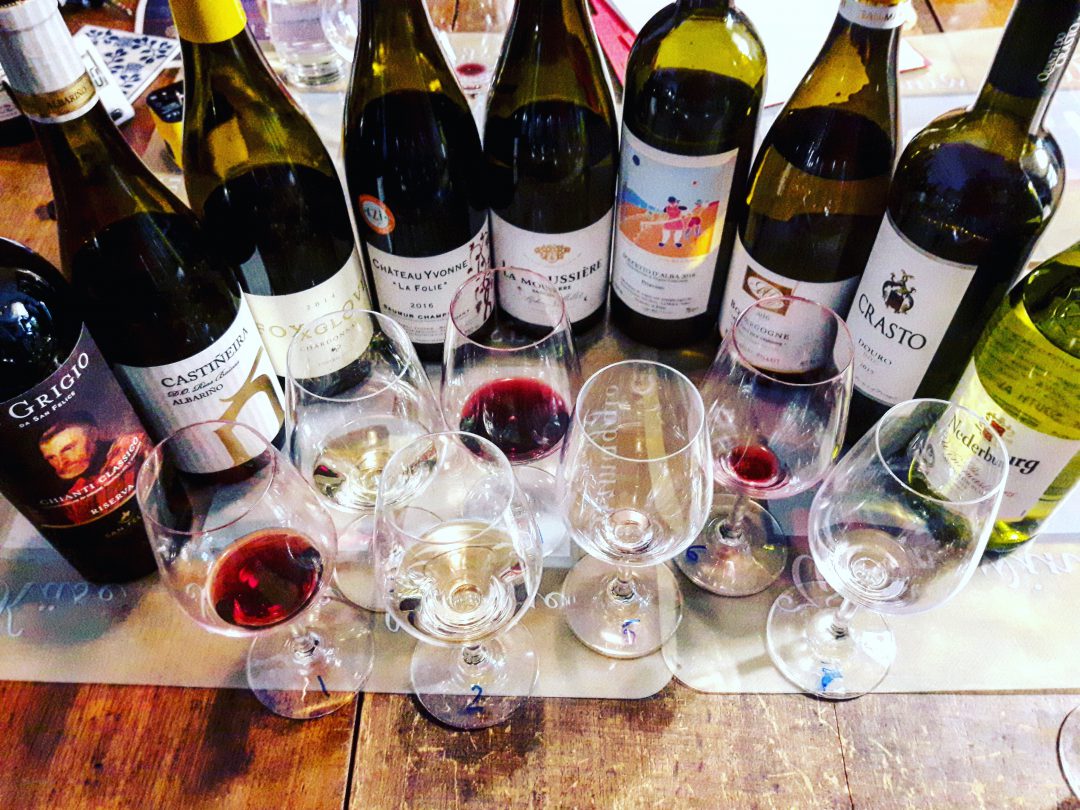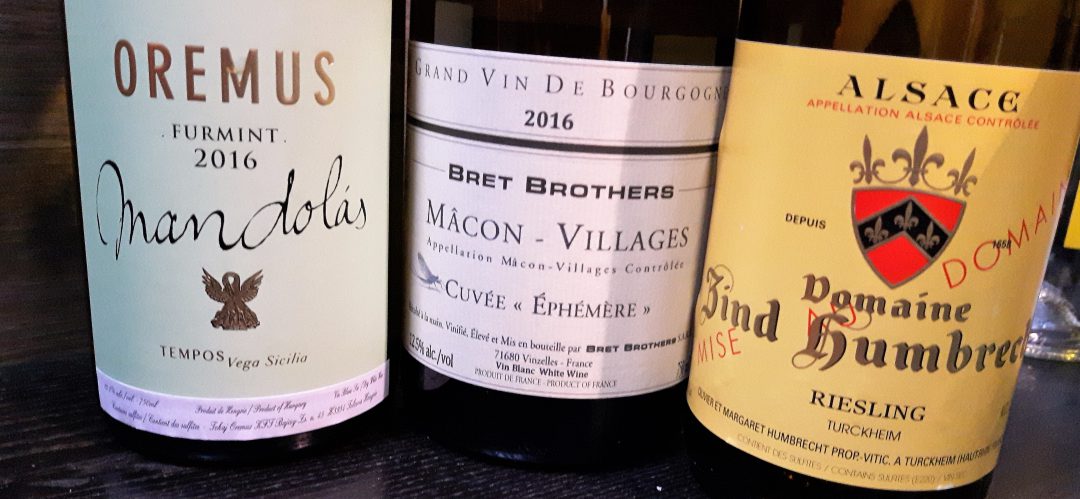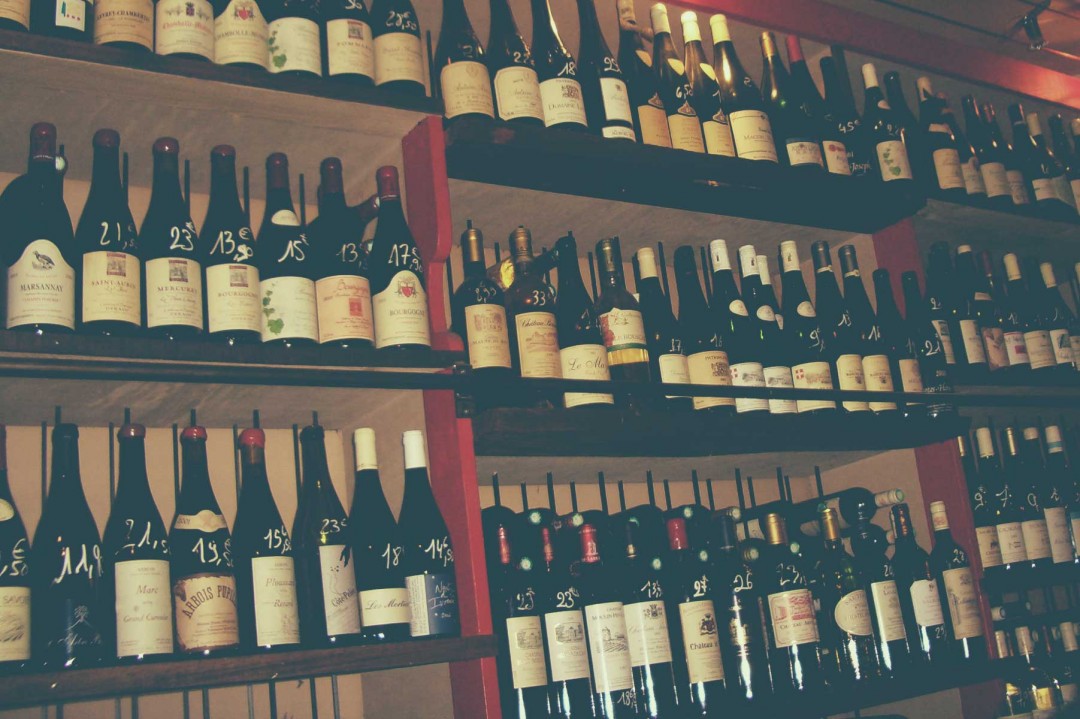You may think that the alcohol content of wine has just one redeeming feature. The mellowing effect it has on us after a hard day’s work is nice (in moderation, of course). However, alcohol actually plays a far more important role in shaping the way a wine tastes and feels on our palate.
***Side note: I have also made this blog post into a short YouTube video. To watch, just scroll down to the bottom & click play. If you enjoy the video, consider subscribing to my YouTube channel so you never miss an episode of my weekly wine education series.
Let’s start with the basics. Wine is simply fermented grape juice. What happens during the fermentation process? Sugar from the pulp of the grapes gets converted into ethanol (aka ethyl alcohol) and carbon dioxide by yeast. Wine by its very nature could not exist without alcohol.
Depending on the alcohol content of wine, a subtle impression of sweetness is imparted on the palate. To demonstrate this fact, Michael Schuster proposes an excellent, try-this-at-home experiment in his “Essential Wine Tasting” book. Pour a glass of still water, then in another glass, mix 25% vodka/ 75% water. Taste the plain water, and then taste the vodka mixture. You will immediately see that, even though there is no sugar in the alcoholic beverage, it tastes sweet in comparison with the plain water.
You can also do a similar taste test with wine. If you take two comparable wines with the same level of residual sugar, the lower alcohol wine will appear drier, while the higher alcohol one will seem sweeter.
Alcohol in wine also brings a hint of bitterness similar to that found in tonic water. This bitterness is more or less perceptible depending on how powerful the wine is, and, is also subject to how sensitive the taster is to bitter flavours.
The taste buds on our tongue contain taste receptor cells that allow us to perceive sweet, bitter, sour, salty, and umami flavours. Humans have 25 specific taste receptors for bitterness, as compared to only 2 receptors for salty tastes. However, despite this abundance, many people fail to perceive bitterness. Depending on our genes, our bitter receptors are more or less acute.
The alcohol content of wine also has an enormous impact on wine’s texture. We tend to think that wine is something that we smell and taste, but there is also an important tactile component to wine tasting. Some call this “mouthfeel”, how the wine is perceived on the palate (smooth or chalky, thin or thick).
In the case of higher alcohol wines, there is a definite viscosity – an almost syrupy impression that gives weight and roundness to the wine. If you go back to the glass of water vs. vodka mixture and taste them again side by side you will see that the water feels much lighter and leaner on the palate. Wine’s body is, in part, connected to alcohol levels. Dry, lower alcohol wines will feel lighter on the palate than equivalent, higher alcohol versions.
The viscosity of higher alcohol wines also gives a mouth-coating effect that diffuses aromas around the tongue and makes them seem more intense, with greater persistent. They can also feel quite warm on the finish, with very high alcohol wines appearing unpleasantly hot or spirity.
The majority of dry wines are between 12% to 14.5% alcohol. There is no “perfect” amount though. A balanced level of alcohol in wine will depend on many factors, notably the density and structure of a wine. The famous Amarone wines of the Valpolicella area regularly reach 16% alcohol, and generally feel harmonious due to their bold, weighty structure and high levels of dry extract. Conversely, many simple, linear red wines at 13.5% alcohol can feel hot and unbalanced. How we perceive alcohol content also depends on personal taste, tannin levels, acidity, dryness or sweetness, and various other elements of a wine’s make-up.
Consumed in moderation, alcohol in wine has been found to clear fat from the arteries and reduce the blood’s tendency to clot thereby limiting the risk of heart disease, heart attacks, and many types of strokes. Most major health organizations, deem 1 to 2 drinks per day (depending on sex, weight, height, etc.) to be moderate. A serving size is measured as 120 to 150mL (4 to 5 ounces) depending on which country’s guidelines you follow
As a parting note, keep in mind that the alcohol level quoted on the label is not necessarily 100% accurate. Eu wineries are allowed a 0.5% leeway up or down in wine alcohol labeling, while the USA permits a full 1% difference. I am always a little suspicious when I see a 14.9% bottle of US wine…Keeping it just shy of 15% seems much lighter, while in reality, the wine could actually be almost 16% alcohol!
So next time you are imbibing, try to think beyond the chill-out factor of wine alcohol content. Taste the sweetness, the bitterness, the viscosity, and the warming sensation on the finish, and you will see how vital alcohol is to shaping wine’s taste and texture.




